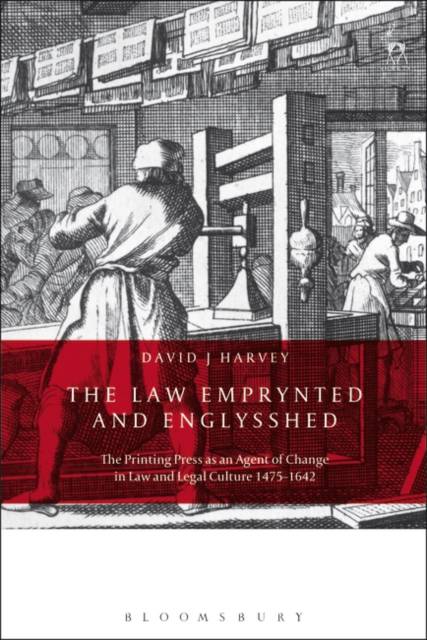
- Afhalen na 1 uur in een winkel met voorraad
- Gratis thuislevering in België vanaf € 30
- Ruim aanbod met 7 miljoen producten
- Afhalen na 1 uur in een winkel met voorraad
- Gratis thuislevering in België vanaf € 30
- Ruim aanbod met 7 miljoen producten
Zoeken
The Law Emprynted and Englysshed
The Printing Press as an Agent of Change in Law and Legal Culture 1475-1642
David John Harvey
Hardcover | Engels
€ 228,95
+ 457 punten
Uitvoering
Omschrijving
What impact did the printing press - a new means of communicating the written word - have on early modern English lawyers? This book examines the way in which law printing developed in the period from 1475 up until 1642 and the start of the English Civil War. It offers a new perspective on the purposes and structures of the regulation of the printing press and considers how and why lawyers used the new technology. It examines the way in which lawyers adapted to the use of printed works and the way in which the new technology increased the availability of texts and books for lawyers and the administrative community. It also considers the wider humanist context within which law printing developed. The story is set against the backdrop of revolutionary changes in English society and the move not only to print the law, but also increase its accessibility by making information available in English. The book will be of interest to lawyers and legal historians, print and book historians and the general reader.
Specificaties
Betrokkenen
- Auteur(s):
- Uitgeverij:
Inhoud
- Aantal bladzijden:
- 326
- Taal:
- Engels
Eigenschappen
- Productcode (EAN):
- 9781849466684
- Verschijningsdatum:
- 26/02/2015
- Uitvoering:
- Hardcover
- Formaat:
- Genaaid
- Afmetingen:
- 157 mm x 236 mm
- Gewicht:
- 657 g

Alleen bij Standaard Boekhandel
+ 457 punten op je klantenkaart van Standaard Boekhandel
Beoordelingen
We publiceren alleen reviews die voldoen aan de voorwaarden voor reviews. Bekijk onze voorwaarden voor reviews.











